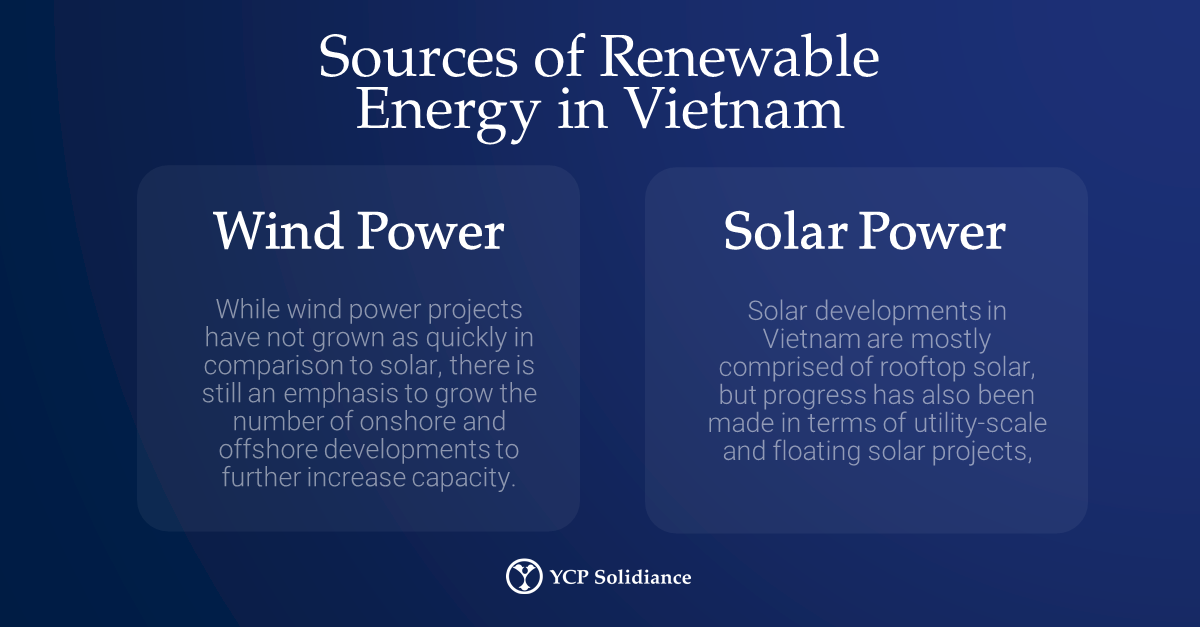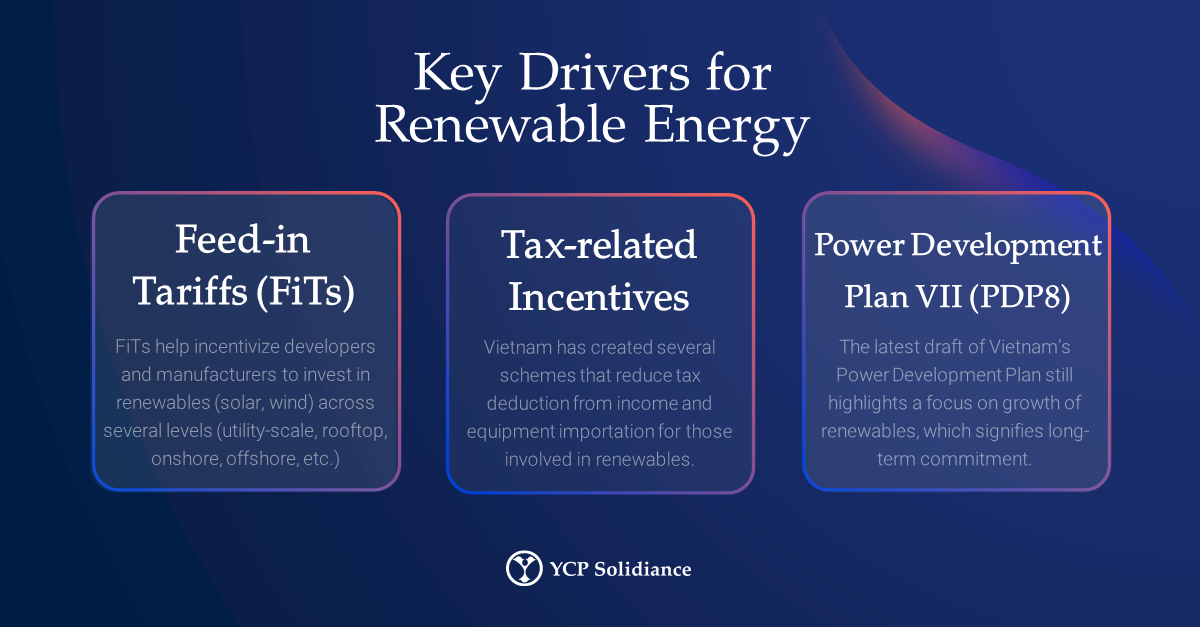What should businesses and professionals in Vietnam expect in 2022? As part of a new insight series, YCP Solidiance will be releasing several in-depth articles that feature emerging business trends in Vietnam, guided by research and analysis from YCP Solidiance Director, Dennis Lien.
Read the second installment below to understand what Vietnam is doing to develop its renewable energy sector, and how this investment is helping stimulate growth. To read future installments of this series, subscribe to our newsletter here.
Driven primarily by solar and wind developments, the renewable energy sector in Vietnam has witnessed a tremendous amount of growth. Despite the progress achieved over the last few years, room for further development remains.
Bolstered by policy reform, a general interest in the advantages of renewable energy, and other factors, expect renewables to generate sustained interest from a plethora of businesses and investors who are looking to capitalize this 2022 as well as in the years to follow.

Examining Industry Development
In 2018, Vietnam’s solar PV capacity was at a mere 86 megawatt (MW), but due to a significant shift in attitude and focus on the importance of renewable energy, the country’s solar PV capacity increased to 4.75 gigawatt (GW) within only a year. Such progress has carried over in succeeding years as Vietnam’s solar photovoltaics (PV) capacity is now at 16.5 GW as of January 2021.
The rapid development of the renewable energy sector in Vietnam also extends to wind energy. As per data from a 2020 report on renewable energy, Vietnam currently produces 11.8 GW of wind energy and boasts a growth rate of 70% in terms of annual wind power capacity added. By 2025, Vietnam expects to produce an additional 12 GW of energy capacity through several onshore and offshore wind projects.
At a glance, these statistics signify unprecedented success for renewables in Vietnam, but more importantly, these achievements suggest that the demand across the public and private sectors are still growing. The interest surrounding renewable energy also indicates that businesses and professionals alike are recognizing and committing to renewables as a long-term goal. To capitalize on the potential advantages that renewable energy offers, investors are encouraged to act quickly and buy-in when the opportunity presents itself.

Setting the Foundation and Driving Change
To foster a conducive environment that emphasizes sector-wide development, the Vietnamese government has initiated several changes that directly benefit manufacturers and developers involved in renewables.
Aside from reducing income and equipment import tax, perhaps the foremost reason as to what has stimulated renewable energy growth in Vietnam is the implementation of generous feed-in tariffs or FiTs; a term which refers to policies that are designed to drive investment and use of renewable energy. Similarly, the early drafts of the Power Development Plan VIII (PDP8) indicate that there is a firm commitment from the government to bolster Vietnam’s adoption of renewable energy and a gradual shift away from fossil fuels.
Whether it be FiTs, PDP8, or reduced tax breaks and incentives, the current landscape of Vietnam is favorable to anyone looking to get into renewable energy. Anticipating that the government will continue to implement such initiatives, foreign and domestic investors should consider renewable energy in Vietnam as a lucrative venture that will likely generate a promising return.
Moving forward, expect Vietnam to continue the rapid development of its renewable energy sector – both internationally and domestically. Within the country, the collaboration between the private and public sectors will drive growth. Meanwhile, more and more foreign players will eventually invest and bring business to Vietnam, especially given the potential exhibited thus far.
To gain more insight about Vietnam, its emerging business trends, and the possible implications in 2022, subscribe to our newsletter and read these reports:





